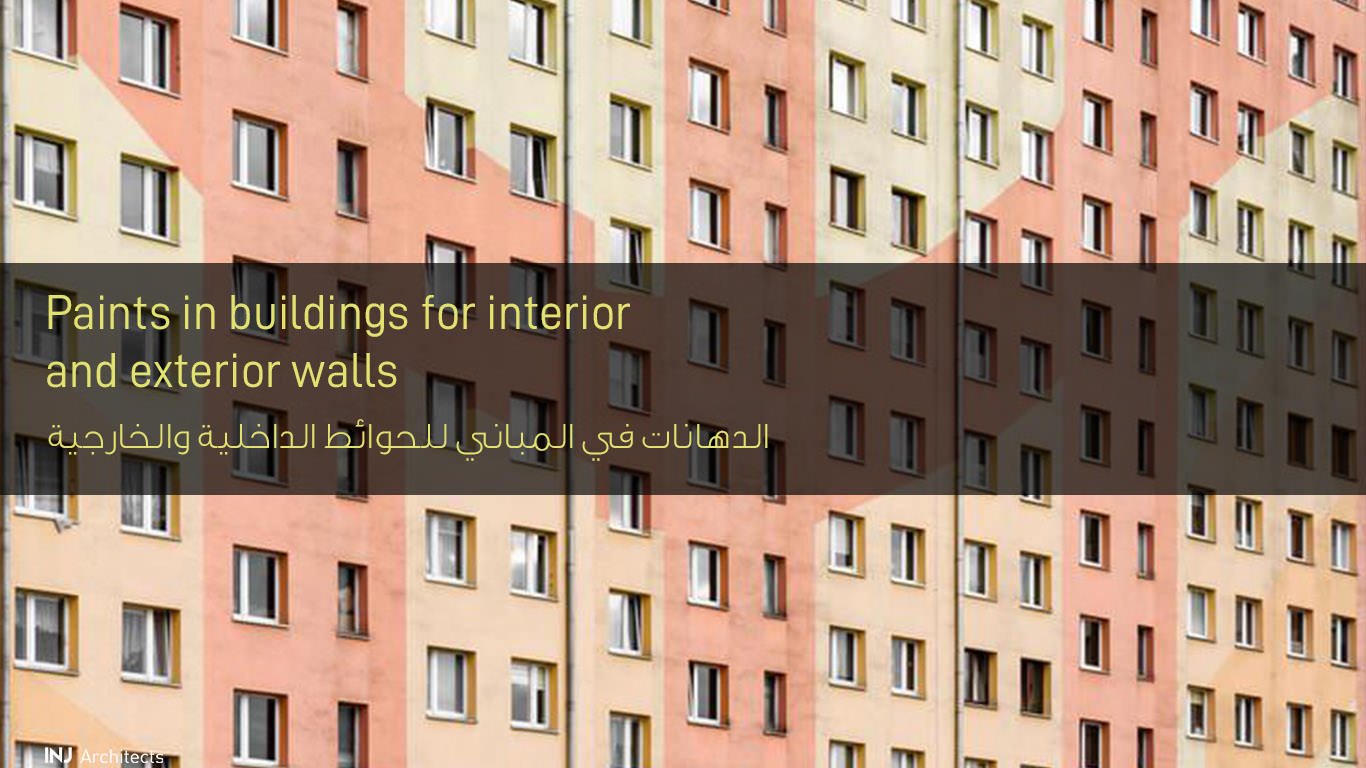Paints in buildings for interior and exterior walls
Paints in buildings for interior and exterior walls
Any type of paint used in buildings consists of several basic materials:
- Basic rule: It consists of the powder which is considered the basis of the paint and which interfaces with the basic texture of the paint
- Binder: It is considered the main component of the paint, and it determines the type of paint, whether it is an oily, aqueous, or alcoholic paint, and it is also the main controller in the texture and quality of the paint used.
- Colored oxides: used to give the paint the desired color. It is made up of one, two or more colors, taking into account the chemical reactions and homogeneity between the substances.
- Additional aids: They are stabilized or dried material and are considered of great importance in producing all the paints.
Paints manufacturing methods:
- Grind the dye used in the paint for a full day until it becomes dough
- Remove any of the impurities present in the paste dye and sift them well.
- Adding colors and adjusting them with the grades of colors required to be produced.
- The pre-filling stage in which the paint is diluted according to the required density.
- The last stage is where the paints are filled in their cans.
Types of paints produced by binders:
1- Water-based paint: These are called water-based paints, because they are diluted with water and used in painting walls and ceilings. They are found in different colors and any of the dyes can be added to them.
2- Oily paint: this name is called because it is made from oily particles extracted from flaxseed sometimes, and it is diluted by solvents intended for oils only. This type of paint is characterized by its stability on the walls to large periods of time.
3- Plastic paint: It is the one that can withstand weather conditions from rain and high temperatures, so it is used on the outer walls.
4- Epoxy paint: This type is considered the most used paints today, but it has many defects as its color changes when exposed to temperatures or high light, so it is advisable to use it in interior places away from high light such as garages.
The main types of paints used externally:
1- Flat exterior paint: It is used to hide the defects of the walls, as it does not reflect light and is of great porosity and because of its porosity, it is not suitable for painting roofs or doors.
2- Satin exterior paint: This type of paint is used in homes more as it is easy to maintain from period to period and clean well, and this satin coating is more powerful and durable than flat paint.
3- The exterior paint has a glossy appearance: this paint gives a look of home to it as it reflects the light in a large way, so it is cautioned against using it in a big way except in the places that require its use.
Also browse: Product date model exchange formats
The best colors used for exterior paint:
- Yellow: This color gives a classic view to the house and makes it more bright.
- Green: this color gives a feeling of relaxation because it is taken from nature.
- Gray: used by people who want to give their homes a feeling of strange and mysterious.
- Brown: It is the most weather-tolerant color and remains the same degree to larger periods of time. This color gives soft and elegant touches to the outside view of the house.
Types of paints used internally:
Interior paints are divided into three types, where they are plastic, oil or what is newly known in the form of wall papers that give better interior decoration.
1- Plastic paint: it is considered to be a matte color that is characterized by calmness, and it is an inexpensive paint that is suitable in all prices with all layers.
2- Oily paint: This type of paint gives a slight shine and luster, which results in a more beautiful look and its colors are of light shades.
Follow us on Twitter to stay updated







